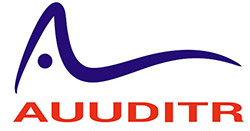Information Security: Understanding the Key Components, Types and Challenges
5 Key Components of Information Security
Confidentiality: Confidentiality refers to the protection of sensitive information from unauthorised access and disclosure. This component of information security ensures that only authorised individuals have access to sensitive information, such as financial records, personal data, and confidential business information.
Integrity: Integrity is the assurance that information is complete, accurate, and protected from unauthorised modification or destruction. It helps to ensure that information is protected from unauthorised changes and that its authenticity is maintained.
Availability: Availability refers to the accessibility of information and systems when needed. This component of information security ensures that authorised individuals have access to the information and systems they need to do their job, and that these resources are not interrupted or unavailable.
Authentication: Authentication is the process of verifying the identity of an individual or system. This component of information security helps to ensure that only authorised individuals have access to sensitive information and systems, and that they can be held accountable for their actions.
Authorization: Authorization refers to the process of granting or denying access to information and systems based on specific permissions and roles. This component of information security helps to ensure that individuals have access only to the information and systems that they need to do their job, and that they cannot access or modify information that they are not authorised to access.
4 Types of Information Security
Physical Security: Physical security refers to the protection of information and systems from physical damage or theft. This type of information security includes measures such as security cameras, locks, and fire suppression systems.
Network Security: Network security refers to the protection of information and systems from unauthorised access and attacks over a network, such as the internet. This type of information security includes measures such as firewalls, intrusion detection systems, and encryption.
Application Security: Application security refers to the protection of applications, such as software programs, from unauthorised access, modification, or destruction. This type of information security includes measures such as secure coding practices, testing, and access controls.
Data Security: Data security refers to the protection of data, such as files and databases, from unauthorised access, modification, or destruction. This type of information security includes measures such as encryption, backup and recovery, and access controls.
Information Security Challenges
Human Error: Human error is a common cause of security breaches and can include simple mistakes such as losing a laptop or using weak passwords.
Advanced Threats: Advanced threats, such as malware, ransomware, and phishing attacks, are becoming more sophisticated and difficult to detect.
Complex Systems: Complex systems and networks can be difficult to secure and can provide attackers with multiple points of entry.
The Growing Attack Surface: With the increasing use of digital technologies, the attack surface is expanding, and attackers have more opportunities to gain access to sensitive information.
The Evolving Threat Landscape: The threat landscape is constantly evolving, and organisations must stay up-to-date on the latest threats and vulnerabilities to remain secure.
Conclusion
Information security is a critical aspect of modern technology, and it is essential to understand its key components, types, and challenges. By implementing best practices and staying up-to-date on the latest threats and vulnerabilities, organisations and individuals can help protect themselves and their sensitive information. It is important to recognize that information security is not just the responsibility of IT departments, but of all individuals within an organisation. Everyone has a role to play in protecting sensitive information, from using strong passwords to reporting suspicious activity. By working together, organisations and individuals can help ensure the confidentiality, integrity, and availability of sensitive information and systems.
Better compliance
By integrating compliance processes and systems into the overall GRC framework, organisations can ensure that they are complying with regulations and laws in a consistent and effective manner. This can help organisations to minimise the risk of legal and financial penalties and ensure that they are meeting their obligations under relevant data protection and privacy laws.
Aligned IT systems and operations
By integrating governance processes and systems into the overall GRC framework, organisations can ensure that their IT systems and operations are aligned with their overall business objectives. This can help organisations to ensure that their IT systems and operations are delivering the desired results and supporting their overall business objectives.
Better decision-making
By integrating all aspects of GRC into a single framework, organisations can access a comprehensive view of their information security risks, compliance obligations, and IT systems and operations. This can help organisations to make better informed decisions and allocate resources more effectively to manage their information security risks and comply with regulations and laws.
Conclusion
In conclusion, Governance, Risk Management, and Compliance (GRC) plays a critical role in information security by helping organisations to effectively manage their information security risks, comply with regulations and laws, and align their IT systems and operations with their overall business objectives. By integrating all aspects of GRC into a single framework, organisations can access a comprehensive view of their information



